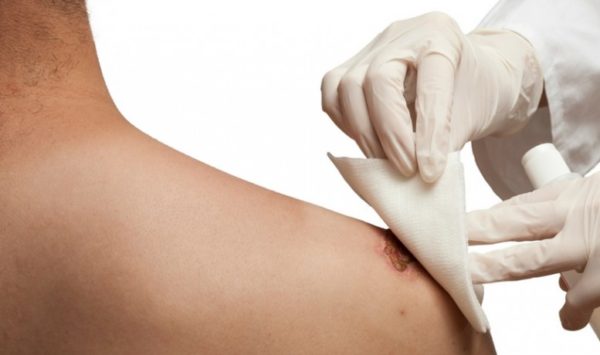A Clinician’s Take on Working with Wounds Better

By Margaret Falconio-West, BSN, RN, APN/CNS, CWOCN | June 27, 2017
The last few weeks, I have traveled from coast to coast. And, I am hearing questions about wound healing—what does it take? There is an old saying: “You can spit in a wound and it can still heal.” Obviously, it’s not that there is a magic saliva out there; this is based on the ability of the patient to heal their wounds. What do clinicians need to know to help provide their patient the best opportunity to heal?
- Diabetes: If the patient’s glucose levels are not under control, the ability of the body to make progress toward wound healing is delayed until the blood sugars are under control. Sometimes this is a fairly simple solution, but it needs to be addressed.
- Circulation: Especially if the patient has a vascular-type wound, what is the circulation and what are we doing to help improve it?
- Moisture status:Not just from continence or incontinence, but perspiration and wound drainage can lead to delays in wound healing.
- Medications: When a patient is taking several different medications, this polypharmaceutical combination maybe contribute to delays in healing.
- Etiology: Having the correct diagnosis for a wound is essential to treating the wound appropriately. Consider a patient has a venous leg ulcer and the standard of care includes compression. If that wound was not categorized correctly—and treated as an arterial wound—the treatment of compression would be completely missed. On the other side of that vascular wound spectrum—if they have an arterial ulcer and the treatment included compression—it could have damaging results.
- Nutrition: The nutritional health of a patient with a wound must be assessed and addressed. The nutritional guidelines remind us that using simple lab values, such as albumin or even pre-albumin will not give a good picture of a patients nutritional health. Look at unintentional weight loss, decrease in strength among other parameters.
- Product selection: There are a few basic principles of product selection that will help any clinician choose the correct dressing type. For example, if the wound is draining, choose a product that absorbs drainage and if the wound is deep choose a product that will fill the dead space. Even though these are very basic concepts, they will lead to the correct path in wound care and healing.
- Real expectations needs to be set: There are some wounds that are considered “non-healable” and the patient may not be able to heal. If the plan of care for this type of patient includes complete closure, you’re setting up for failure. Sometimes the goal is to contain drainage or address odor.
Our job as clinicians is not to put that magic dressing on or in the wound, but to make sure whatever dressing that is used is appropriate, practical and realistic, and that the patient is in the best possible condition to heal.
Margaret Falconio-West, BSN, RN, APN/CNS, CWOCN
Senior Vice President of Clinical Services
After receiving her Bachelor of Science degree in nursing, Margaret Falconio-West continued post graduate work at the College of St. Francis and completed her WOC education at Emory University. She holds licenses in Illinois as a registered nurse as well as an advanced practice nurse. She is board certified as full scope of practice wound, ostomy, continence nurse (CWOCN) through the WOCN Certifying Board. She has presented numerous scientific posters and papers at national symposiums and published many peer reviewed journal articles in the field of skin, wound and continence care. Falconio-West is Medline’s senior VP of clinical services, advanced wound care sales.

